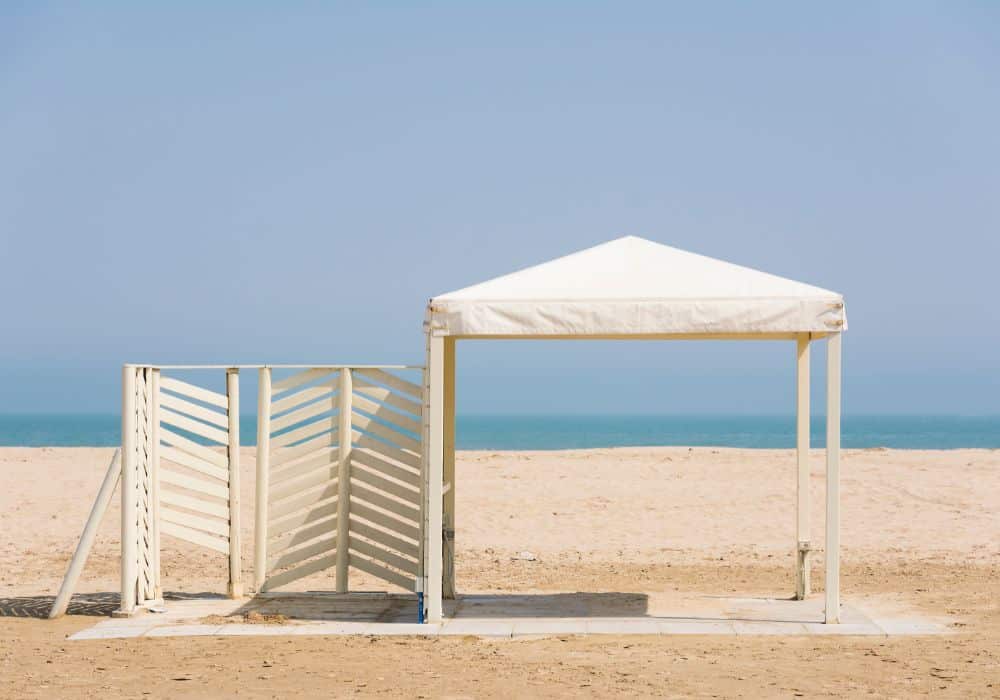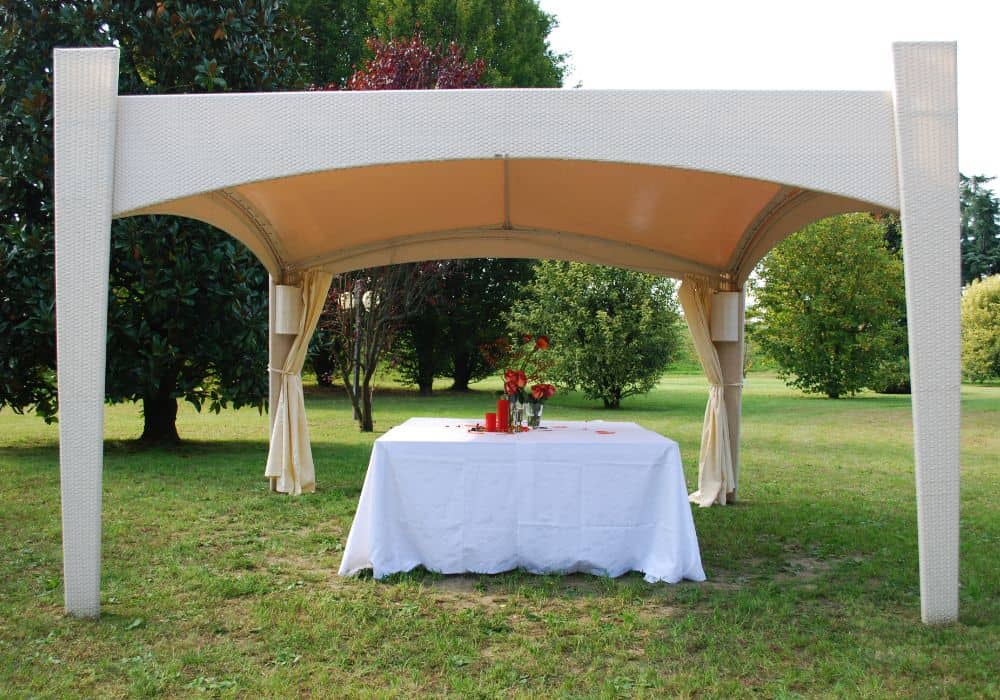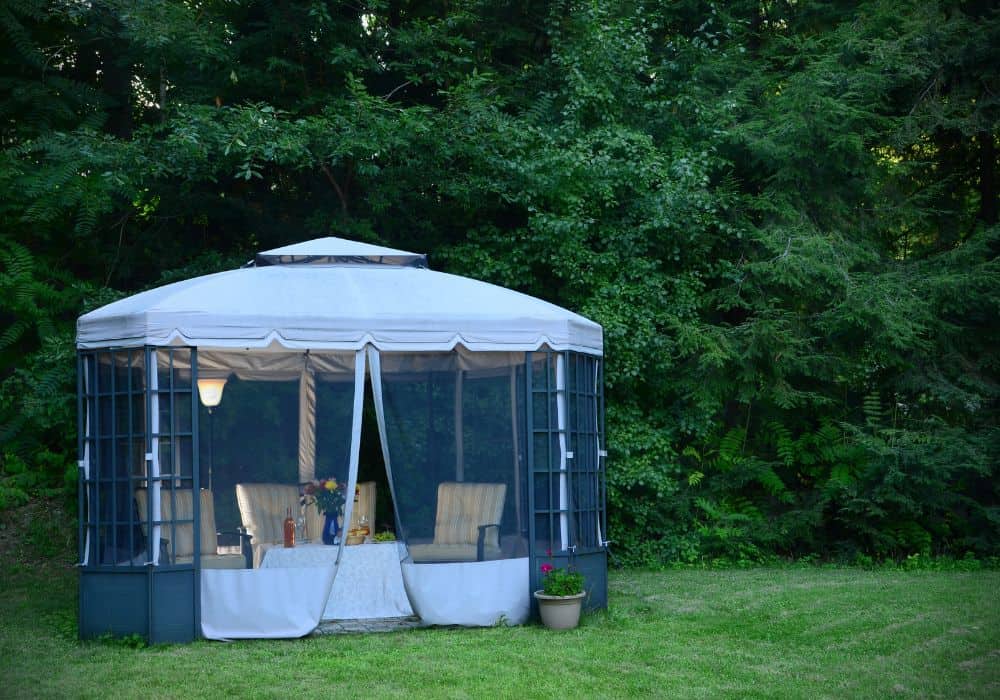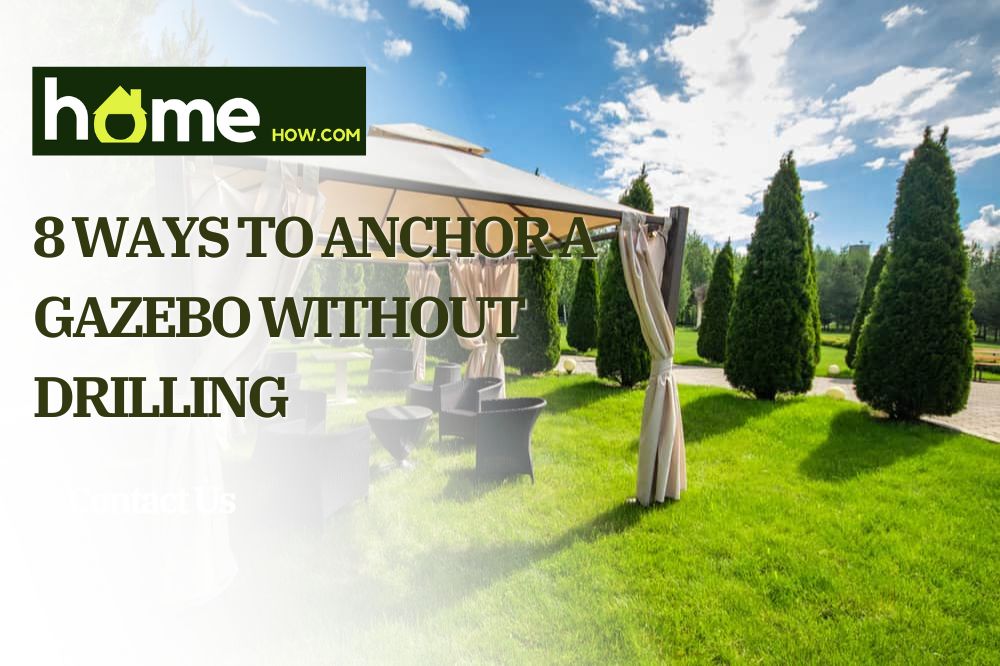If you want to know how to anchor your gazebo without drilling, you’re in luck. There are several ways to do this, and each has its own benefits and drawbacks.
When shopping for the best gazebo anchor weight, it is essential to consider your personal preference as well as the surface the gazebo is on. Some weights will be more suitable than others, depending on what type of flooring you plan to use them on.
In this post, we’ll go over the different ways to anchor your gazebo, and we’ll help you choose the best option for your needs. Stay tuned!
Tools You Will Need
Many people don’t realize that you can anchor your gazebo without drilling into the ground. This is especially useful if you’re setting up your gazebo on a deck or patio where you don’t want to damage the surface.
Before we go into detail, let’s go over a few of the tools you can use to anchor your gazebo. If you have any of these objects on hand, you will be able to successfully anchor your gazebo without drilling any holes.
- Stakes
- Gym Weights
- Weight Bags
- Planters
- Concrete
- Pavers with footers
- Straps
- Gazebo leg weights
Additional items based on your project:
- Rope
- Bungee Chord
- Hammer
- Sand
- Soil
- Stones
- Epoxy Resin
- Masonry Adhesive
- Protective gloves
8 Methods Of Anchoring A Gazebo Without Drilling

If you’re a renter or simply don’t want to make permanent changes to your property, or your gazebo is only temporary, you may wonder how to anchor down your gazebo without drilling any holes.
There are several ways to do this, and the best method will depend on the type of gazebo you have, the material it’s made of, and the different weather conditions in your area. For example, if you are in an area with high winds, you’ll need to take special care to ensure that your gazebo is securely anchored.
Anchoring your gazebo without drilling doesn’t have to be a pain. In fact, it’s easy and requires very little effort. The first step is to find the right location for your gazebo. You’ll want to make sure that the area is level and that there are no trees or other obstacles nearby that could potentially damage your gazebo.
1. Stakes
Whether you’re worried about high winds or simply want to keep your gazebo in one place, anchoring it with stakes is a great way to do it if you have enough grassy area to place your gazebo.
Once you’ve found the perfect spot, the next step is to prepare the ground for your stakes. If you’re using metal or plastic stakes, you’ll need to use a hammer to drive them into the ground.
If you’re using wooden stakes, on the other hand, you can simply pound them into the ground with your hands. Once all of your stakes are in place, tie them off to the corners of your gazebo using rope or bungee cords.
2. Gym Weights
Drilling holes in your patio or deck to secure your gazebo can be a daunting and difficult task. If you’re looking for an easier solution, you can anchor your gazebo without drilling using gym weights or dumbbells.
Start by placing the gym weights around the legs of your gazebo. Then, use rope or bungee cords to secure the weights to the gazebo. This will help to keep the gazebo in place during windy conditions.
3. Weight Bags

One method is to use weight bags. Simply fill the bags with sand or stones and position them around the posts of your gazebo. You can then tie or strap the sandbags to the gazebo legs, which will hold them in place even in windy conditions.
Another advantage of this method is that it’s very easy to adjust the sandbags if you need to reposition your gazebo. All you need is a shovel and some time to fill the bags.
Pro Tip: Keep some extra sand and weight bags around just in case you need extra security in the event of a storm.
4. Planters
One way is to use planters filled with sand or potting soil. This is particularly helpful if you don’t want to stake the gazebo into the grass or if your gazebo is on a hard surface such as a deck, patio, or concrete.
Simply put the planters in the corners of the gazebo and dig the legs down into the planters. If you are ok with drilling into the legs of your gazebo, you can drill the legs directly onto the planter for added security.
Next, add your preferred material to the planters. You can use potting soil in your containers and plant some flowers around the legs for an extra touch.
Pro-Tip: If your gazebo is permanent, but you don’t want to drill into the legs, you can use concrete on the bottom of the planter to ensure it will stay put.
5. Concrete
If you’re looking for a way to anchor your gazebo, the most secure method is to use concrete. There are a few things to keep in mind when using concrete for this purpose.
First, you’ll need to make sure the area where you’re pouring the concrete is level and free of debris.
Second, you’ll need to use mold-release spray or oil, so the concrete doesn’t stick to the mold.
Third, you’ll need to mix the concrete properly and pour it into the mold in layers, tamping down each layer as you go.
Place the gazebo legs into the concrete base. Once the concrete has set, you can remove the mold, and your gazebo will be securely anchored. Following these steps will ensure that your gazebo is anchored firmly in place.
6. Pavers with footer

If you don’t have a concrete slab to drill to anchor your gazebo, you will need to make heavy anchors for the legs. One way to ensure it is properly anchored is to use concrete footers with pavers.
To do this, first, dig holes for the footers that are deep enough so that they will be below the frost line. Then, mix the concrete and pour it into the holes, using a level to make sure the footers are even.
Once the concrete has set, place the pavers on top of the footers, using concrete adhesive to secure them in place.
Finally, backfill around the pavers with soil, making sure to pack it down firmly. By following these steps, you can be confident that your gazebo will be securely anchored.
7. Straps
The most common method is to secure the straps around the base of the gazebo legs. This can be done by either tying the straps or using a ratchet. If you Tie the straps, make sure to use a double knot so that they are secure.
Another way to anchor your gazebo is to secure the straps to nearby trees or posts. This is a good option if you don’t have anything else to tie the straps to.
Finally, you can also use weight bags or sandbags to help keep your gazebo in place. Simply fill the bags with sand or another type of weight, and then place them on top of the legs.
8. Gazebo leg weights
If you have a pop-up gazebo, you should consider using gazebo leg weights. These weights are designed to fit over the legs of your gazebo and provide added stability.
Simply clip the weights onto the legs of your gazebo, and they’ll help to keep it firmly in place. You can find gazebo leg weights at most hardware stores or online retailers.
Alternatively, if you want more security, you should consider making your own gazebo leg weights using epoxy resin, masonry adhesives, or heavy-duty glue that is water-resistant. Construction adhesives will work as well.
Be sure to follow the product use and manufacturer guidelines when mixing epoxy resins and adhesives and use protective gloves, and keep these products out of the reach of children.
First, choose a heavy material such as a concrete paver. Apply the epoxy resin or adhesive to the bottom of the gazebo legs and the paver to secure the weights in place. Let it sit for 24 hours.
It is best to do this when there is plenty of sunlight and no signs of inclement weather, so the resin or adhesive has time to fully set. With a little bit of effort, you can easily create your own personalized leg weights that will keep your gazebo stable for years to come.
How To Prevent Your Gazebo From Blowing Away
Even if your gazebo is anchored, strong winds and storms can cause it to blow away. Here are some tips to help keep your gazebo in place:
- Make sure the anchors are placed securely in the ground. If your area is prone to strong winds and storms, use more than one type of anchor, such as stakes and weights.
- If possible, place the gazebo in a place with shelters, such as next to a house or garage. This will help protect it from vigorous winds.
- If your gazebo has a removable cover, take it off before bad weather. The wind can get caught in the cover, making it more likely to come away from the anchors.
- Check your anchor, or anchors, regularly to ensure concrete or other materials are not separating from the gazebo legs
By following these tips, you can help keep your gazebo from blowing away in strong winds and storms.
Conclusion
We hope that this article was helpful in showing you some of the many ways that you can anchor down your gazebo without having to drill any holes. Do you have any questions or a favorite method that we didn’t mention? Let us know in the comments. Thanks for reading!
